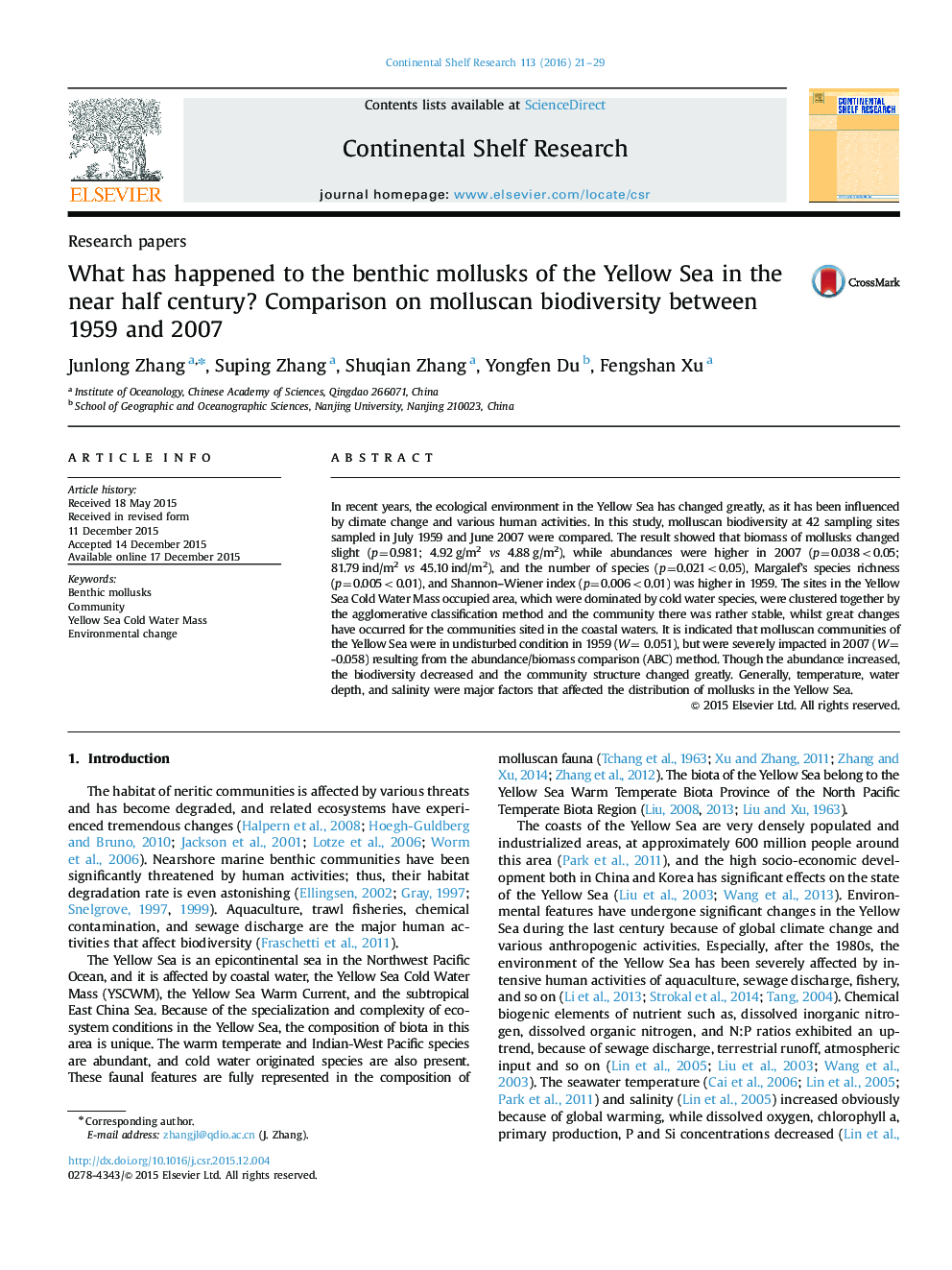| کد مقاله | کد نشریه | سال انتشار | مقاله انگلیسی | نسخه تمام متن |
|---|---|---|---|---|
| 4531653 | 1626100 | 2016 | 9 صفحه PDF | دانلود رایگان |
• The molluscan biodiversity of 42 sampling sites located same between July 1959 and June 2007 were compared.
• The molluscan communities in 1959 was undisturbed, while in 2007 they were severely impacted, and the structure had changed.
• The mollusks over the last fifty years showed a developing trend of smaller body size, shorter life cycles, and were dominated by a small number of species.
• The YSCWM plays an important role in shielding cold water mollusk and keeping cold water community.
In recent years, the ecological environment in the Yellow Sea has changed greatly, as it has been influenced by climate change and various human activities. In this study, molluscan biodiversity at 42 sampling sites sampled in July 1959 and June 2007 were compared. The result showed that biomass of mollusks changed slight (p=0.981; 4.92 g/m2vs 4.88 g/m2), while abundances were higher in 2007 (p=0.038<0.05; 81.79 ind/m2vs 45.10 ind/m2), and the number of species (p=0.021<0.05), Margalef’s species richness (p=0.005<0.01), and Shannon–Wiener index (p=0.006<0.01) was higher in 1959. The sites in the Yellow Sea Cold Water Mass occupied area, which were dominated by cold water species, were clustered together by the agglomerative classification method and the community there was rather stable, whilst great changes have occurred for the communities sited in the coastal waters. It is indicated that molluscan communities of the Yellow Sea were in undisturbed condition in 1959 (W= 0.051), but were severely impacted in 2007 (W= -0.058) resulting from the abundance/biomass comparison (ABC) method. Though the abundance increased, the biodiversity decreased and the community structure changed greatly. Generally, temperature, water depth, and salinity were major factors that affected the distribution of mollusks in the Yellow Sea.
Journal: Continental Shelf Research - Volume 113, 1 February 2016, Pages 21–29
